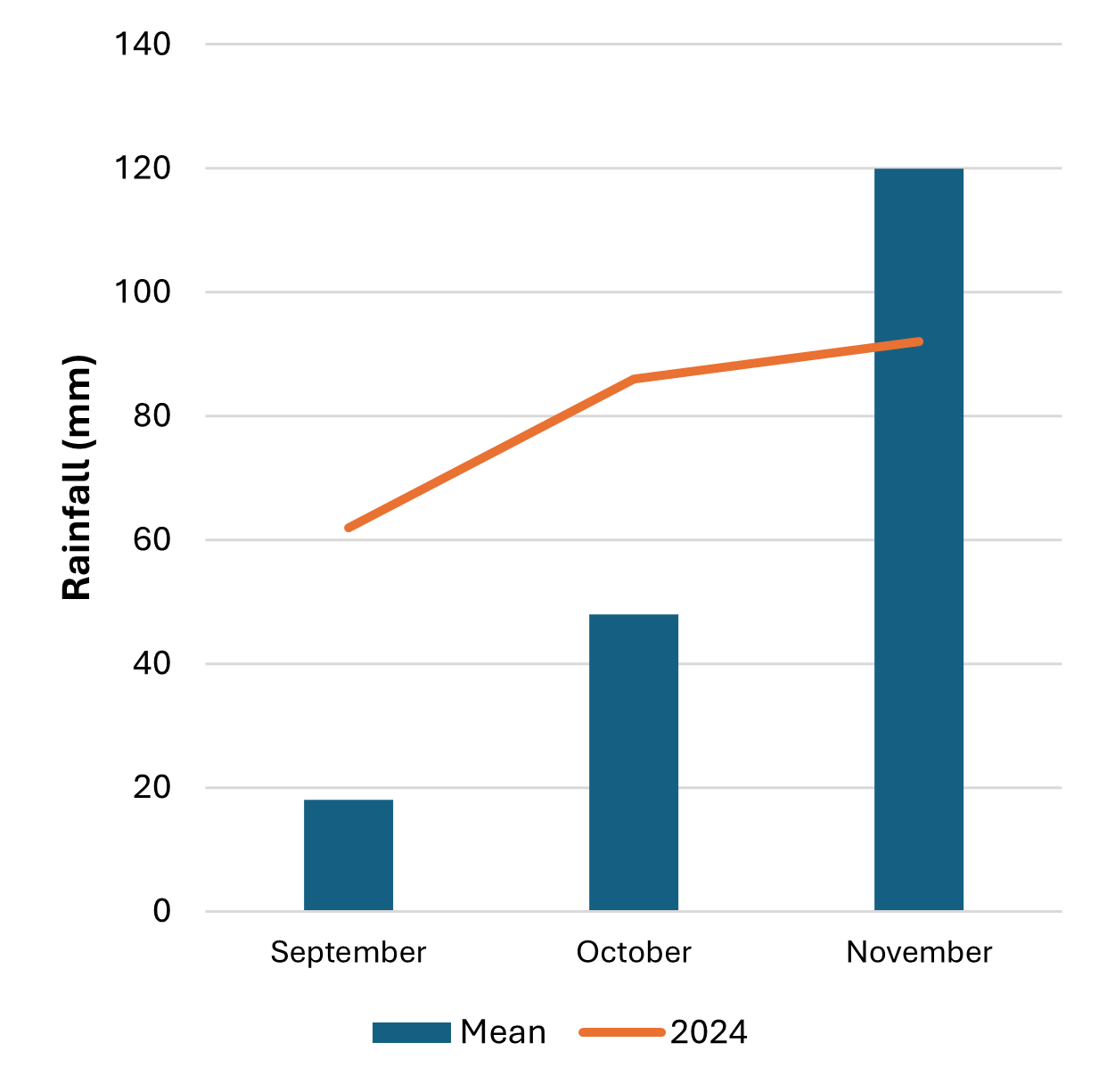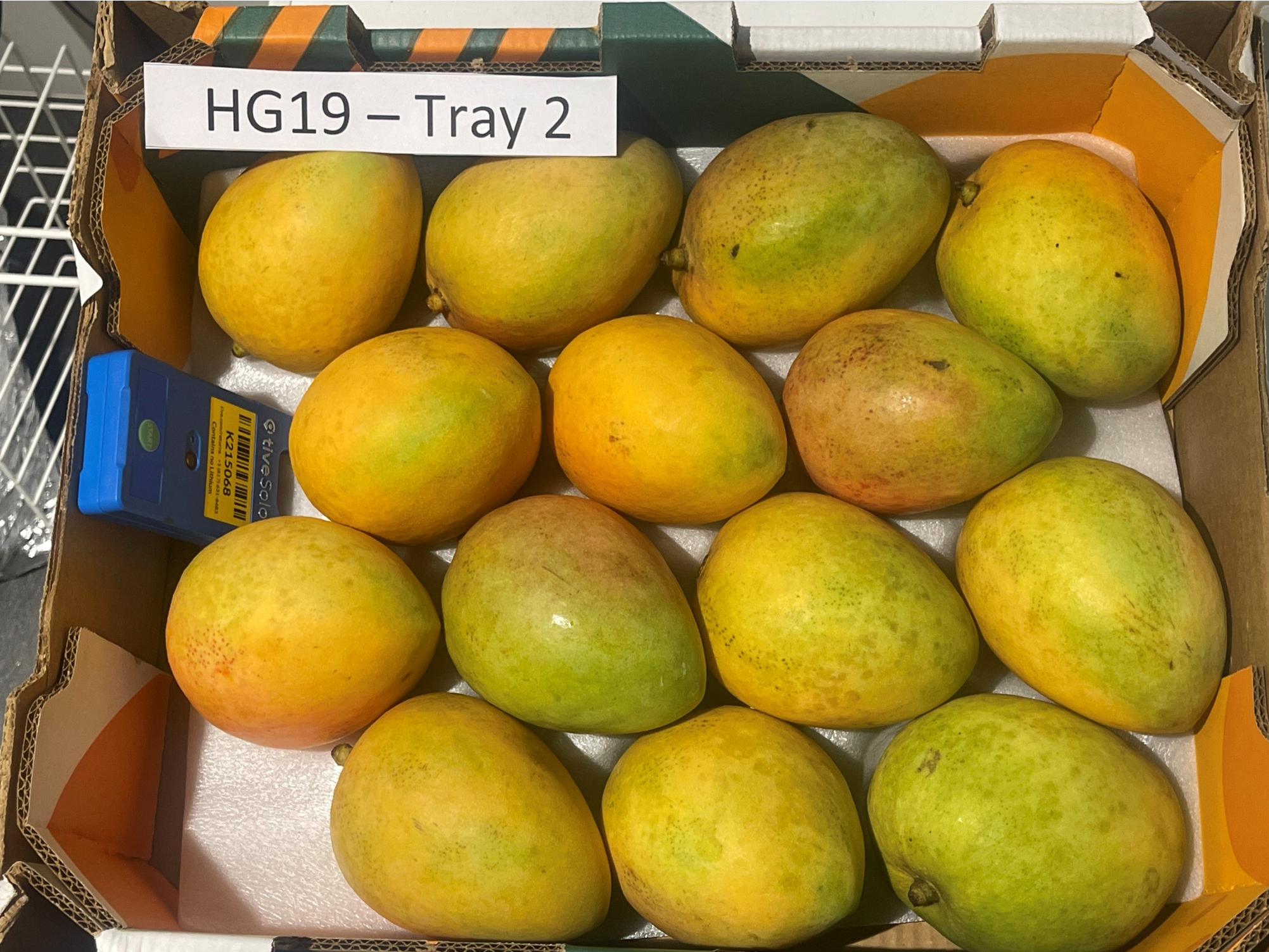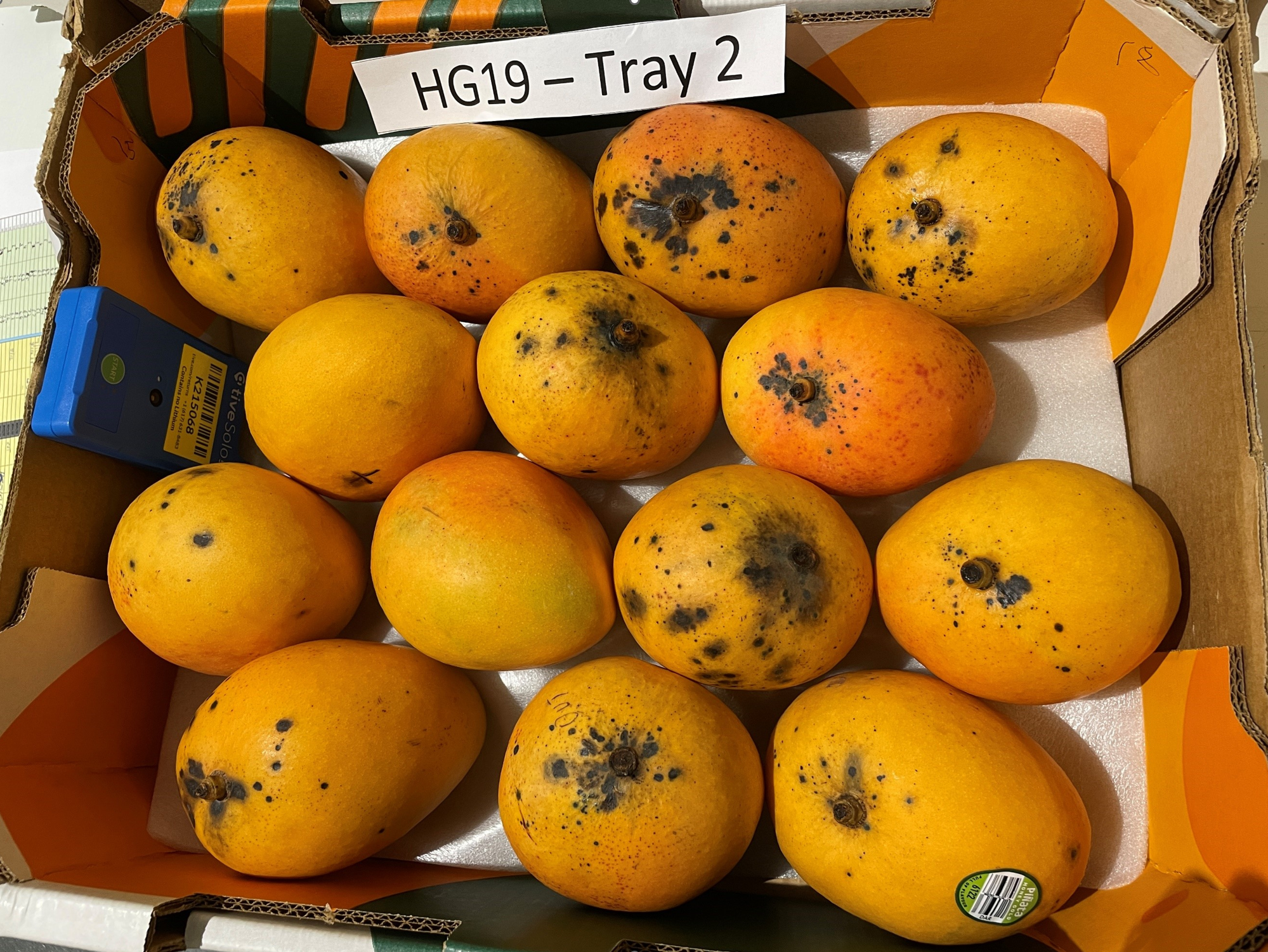Managing Mango Postharvest Disease: It starts in the Orchard
Shanara Veivers, John Agnew, Lindy Coates, Saeedeh Saberi, Queensland Department of Primary Industries (QDPI)
Alan Niscioli, Northern Territory Department of Agriculture and Fisheries (DAF NT)
Effective mango disease management requires an integrated approach. Good orchard hygiene, timely fungicide applications, and appropriate postharvest treatment all play a role in maintaining fruit quality.
What we’ve seen in the market
As part of the Queensland Department of Primary Industries lead project, Serviced Supply Chains II (AM21000), Honey Gold mango fruits were monitored along the supply chain from Darwin to Melbourne over the 2023/24 and 2024/25 seasons. The results often showed reduced shelf life, mainly due to body rots (anthracnose), pepper spot and stem end rot (Figure 1 and Table 1). Poor orchard disease management was a key contributor – especially missed or poorly timed fungicide applications and inadequate spray coverage.
Figure 1. Darwin consignment of Honey Gold mango. Left: at collection in Melbourne market. Right: at the end of shelf life, which averaged 7 days.

Table 1. Examples of Darwin Honey Gold mango consignments monitored in 2023 and 2024 showing significant levels of diseases.
Timing is everything
Fungicide spray programs should respond to weather conditions, especially rainfall, as spores need free water to germinate. For example, rainfall at Middle Point, Northern Territory in September/October 2024 was well above average (Figure 2), a signal that more frequent sprays were required during that period.
Using weather forecasts and tools (such as Bureau of Meteorology (BoM)’s climate outlooks) can help you plan and apply fungicides at the right time.
Figure 2 (right). Rainfall at Middle Point, Northern Territory: September–November 2024 compared with the long-term mean (Source: Bureau of Meteorology).
Key tips for managing anthracnose and pepper spot (caused by Colletotrichum spp.)
- In coastal, tropical growing regions such as Darwin, anthracnose and pepper spot control can be very challenging due to the hot and humid/wet environmental conditions.
- Protect new flushes, flowers, and fruit with timely fungicide application.
- Most products (e.g. copper, mancozeb, thiram etc.) are protectants – they must be applied before infection, not after. Think of them like sunscreen – apply before exposure.
- Some other fungicides (e.g. Amistar®, Merivon®) actually enter plant tissue (e.g fruit), so can give some control after the initial stages of infection have already occurred. However, they still must be applied as part of a preventative spray program to minimise fungicide resistance. Always follow the directions on the label.
- During wet weather, reduce spray intervals for protectant fungicides (e.g. copper every 14 days).
- Maintain good spray coverage across the whole tree (including the upper parts and inside the canopy) and avoid missing applications.
- Prune for airflow and fungicide penetration, remove deadwood, twigs and infected fruit to reduce fungal spore loads.
- Manage nutrition carefully - too much nitrogen, especially poorly timed, can increase anthracnose.
- Avoid harvesting in the rain and pick fruit at correct maturity as over-mature fruit can be more prone to infection
Postharvest treatment for anthracnose
- Treat fruit within 24 hours of harvest
- Use a heated dip or flood spray (52oC for 5 minutes) with an appropriate fungicide (fludioxonil) for best results
- If heated dips/sprays aren’t available, use prochloraz in an unheated spray for 30 seconds
- Cool fruit promptly after treatment and follow best practice temperature management throughout the supply chain
Managing stem end rot (SER)
SER can be caused by a range of different pathogens and is generally trickier to control than anthracnose. SER is particularly problematic in older and/or drought-stressed trees, and immaturely harvested fruit.
Extra tips for SER:
- Fungicides for anthracnose and bacterial black spot may help reduce SER
- Postharvest heated dips/sprays may partially control SER, but unheated dips/sprays do not.
- After-harvest pruning helps force new, healthy growth for next season
- Postharvest temperature management is just as important for SER as it is for anthracnose
Key Takeaways
- Monitor weather forecasts closely, especially rainfall between flowering and harvest
- Spray protectant fungicides before infection – don’t wait for symptoms.
- Stick to postharvest treatment procedures exactly – cutting corners reduces effectiveness.
- Store and transport fruit at recommended temperatures.
- Combine chemical strategies with cultural practices like pruning, nutrition management, and hygiene for best results.
With the right approach, you can reduce disease risk, extend shelf life and deliver better quality mangoes to market.
The Serviced Supply Chains II project (AM21000) is funded by the Hort Innovation Frontiers Fund, Avocado and Strawberry research and development levy, and contributions from the Australian Government, with co-investment from the Department of Primary Industries, Queensland (DPI), Department of Energy, Environment and Climate Action, Victoria (DEECA), Department of Agriculture and Fisheries, Northern Territory (DAF), Department of Primary Industries and Regional Development, Western Australia (DPIRD), Pinata Farms Pty Ltd and Summerfruit Australia Ltd. Hort Innovation is the grower-owned, not-for-profit research and development corporation for Australian horticulture.


